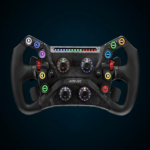In the realm of puzzles, the Rubik’s Cube stands as an iconic symbol of challenge and intellect. Conceived by Hungarian architect Ernő Rubik in 1974, this colorful, twisting puzzle has captivated millions worldwide. Beyond its vibrant facade lies a complex array of algorithms and strategies, requiring a unique blend of spatial reasoning, pattern recognition, and sheer determination. But just how many people possess the skill to conquer this enigmatic cube?
Table of Contents
ToggleThe Popularity of the Rubik’s Cube
Since its introduction to the world stage in the late 1970s, the Rubik’s Cube has enjoyed enduring popularity. It transcends borders, cultures, and generations, appealing to both casual enthusiasts and dedicated speedcubers alike. Over the years, it has become a staple of pop culture, appearing in films, television shows, and even art installations. Its simplicity yet profound complexity continues to fascinate individuals of all ages.
Skill Levels and Mastery
Solving a Rubik’s Cube is no small feat. It requires not only an understanding of the cube’s mechanics but also the ability to devise and execute precise algorithms. Novices may spend hours twisting and turning the cube, attempting to align its colors, while seasoned speedcubers can solve it in a matter of seconds. The journey from beginner to master is marked by countless hours of practice, experimentation, and refinement.
Statistics and Surveys
Estimating the number of people worldwide who can solve a Rubik’s Cube is a challenging task. However, various surveys and competitions provide valuable insights into its popularity and prevalence. Organizations like the World Cube Association (WCA) organize competitions globally, attracting thousands of participants each year. According to WCA data, tens of thousands of individuals have competed in Rubik’s Cube events, showcasing a diverse range of skill levels and techniques.
Furthermore, online communities and forums dedicated to speedcubing serve as hubs for enthusiasts to share tips, tricks, and solve times. Websites like Speedsolving.com host discussions and competitions, fostering a vibrant and inclusive community of cubers from around the world. These platforms offer valuable data points for understanding the demographics and proficiency levels of Rubik’s Cube solvers.
Factors Influencing Proficiency
factors influence an individual’s ability to solve a Rubik’s Cube. Age, cognitive abilities, access to resources, and personal dedication all play significant roles. While some may view the cube as a recreational pastime, others approach it with a competitive mindset, striving to achieve faster solve times and master advanced solving methods such as the Fridrich Method or the Roux Method.
Moreover, the proliferation of online tutorials, mobile apps, and virtual simulators has made learning and practicing the Rubik’s Cube more accessible than ever. Beginners can access step-by-step guides and instructional videos, while advanced cubers can analyze solve algorithms and participate in virtual competitions. This democratization of resources has undoubtedly contributed to the growing number of Rubik’s Cube solvers worldwide.
Conclusion
the Rubik’s Cube continues to captivate and challenge individuals across the globe. While precise statistics on the number of people who can solve it remain elusive, the widespread popularity of competitions, online communities, and educational resources indicates a significant and diverse community of cubers. Whether it’s for leisure, competition, or personal achievement, solving the Rubik’s Cube remains a timeless pursuit of intellect and dexterity. So, the next time you encounter this colorful puzzle, remember that behind each twist and turn lies a world of skill, determination, and endless possibilities.









